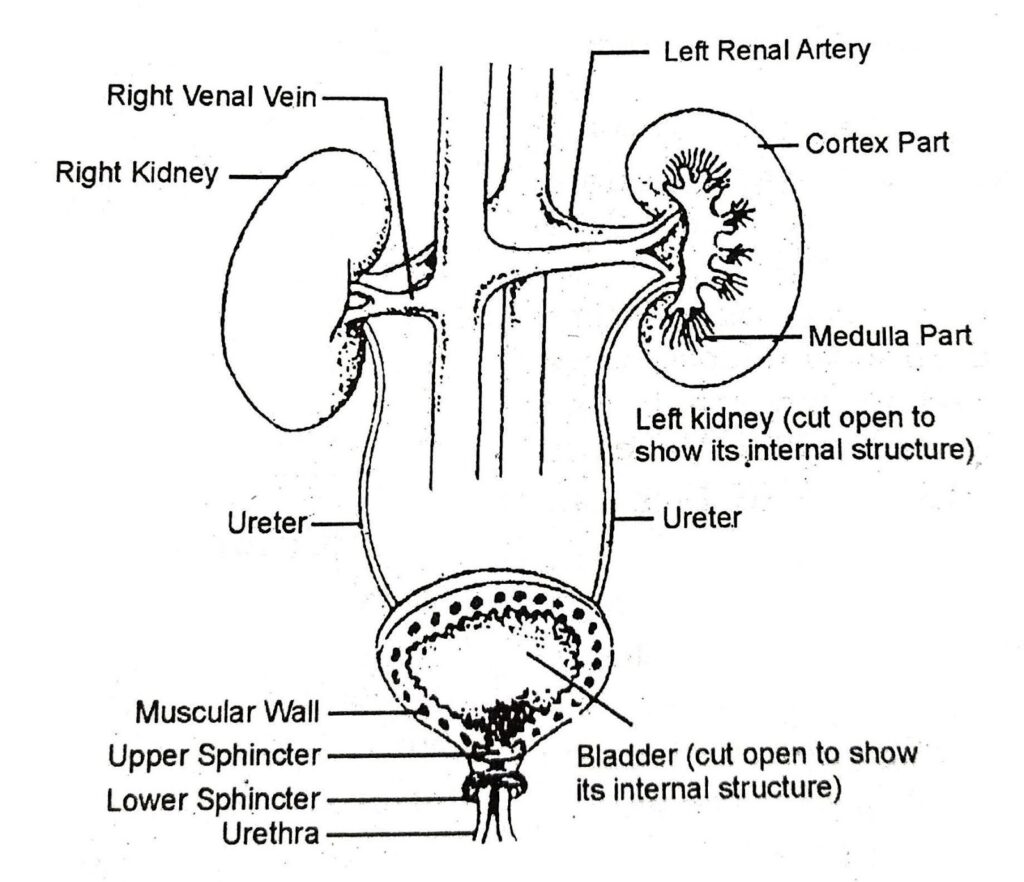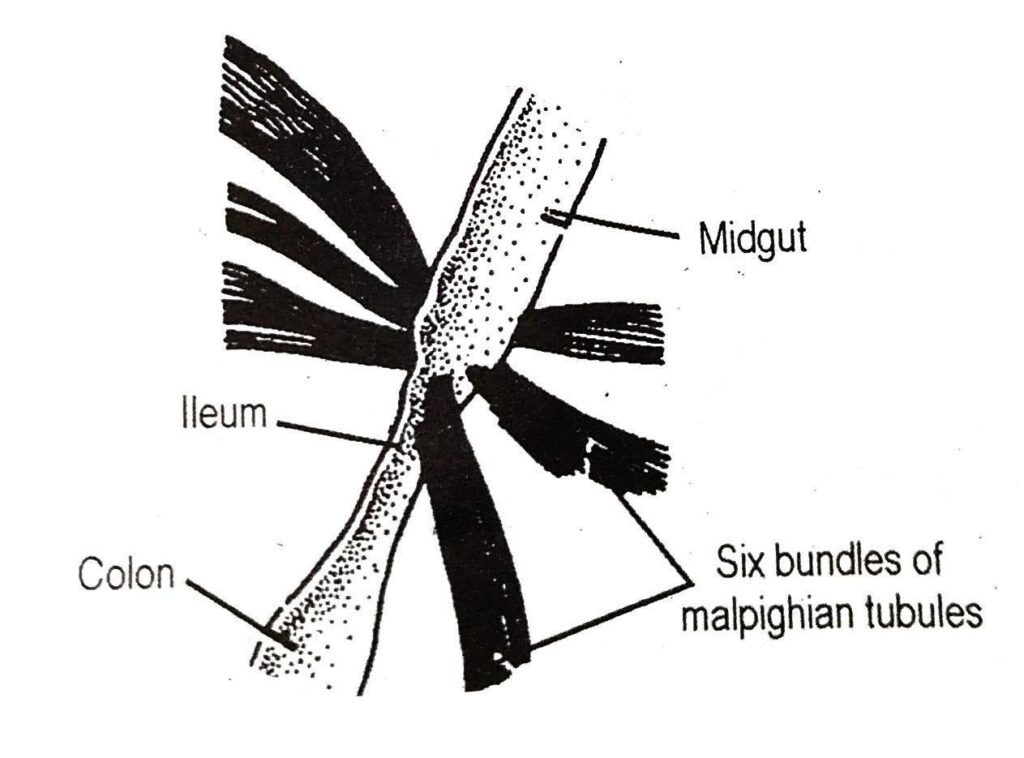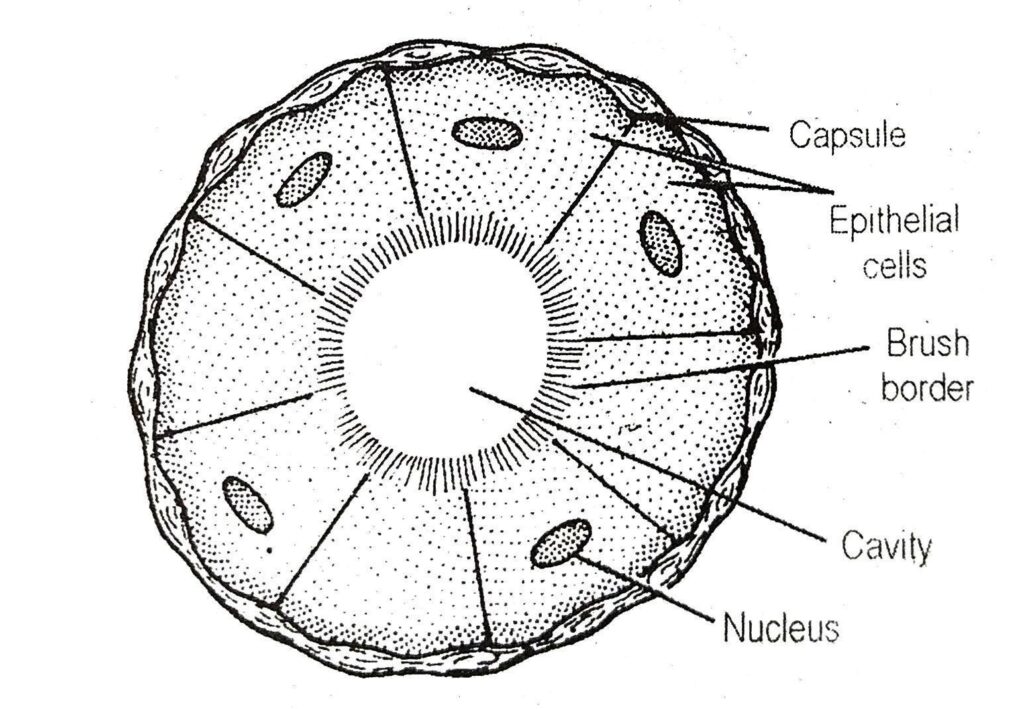NIOS Class 12 Biology Chapter 14 Respiration and Elimination of Nitrogenous Wastes Solutions to each chapter is provided in the list so that you can easily browse throughout different chapters NIOS Class 12 Biology Chapter 14 Respiration and Elimination of Nitrogenous Wastes Notes and select need one. NIOS Class 12 Biology Chapter 14 Respiration and Elimination of Nitrogenous Wastes Question Answers Download PDF. NIOS Study Material of Class 12 Biology Notes Paper 314.
NIOS Class 12 Biology Chapter 14 Respiration and Elimination of Nitrogenous Wastes
Also, you can read the NIOS book online in these sections Solutions by Expert Teachers as per National Institute of Open Schooling (NIOS) Book guidelines. These solutions are part of NIOS All Subject Solutions. Here we have given NIOS Class 12 Biology Chapter 14 Respiration and Elimination of Nitrogenous Wastes Solutions, NIOS Senior Secondary Course Biology Solutions for All Chapter, You can practice these here.
Respiration and Elimination of Nitrogenous Wastes
Chapter: 14
MODULE – II: FORM AND FUNCTION OF PLANTS AND ANIMALS
NIOS TEXTBOOK QUESTIONS ANSWERS
INTEXT QUESTIONS 14.1
1. Define respiration?
Ans: Respiration is the stepwise oxidation of glucose (and other nutrients) which results in the release of energy that is stored in the cytosol in the form of ATP (adenosine triphosphate). Whenever energy is required by our body, ATP is broken down and large amount of energy is released.
2. Name the two gases that are exchanged during respiration.
Ans: (i) O₂. and
(ii) CO₂ gases.
3. What is cutaneous respiration? Name one animal that undertakes cutaneous respiration.
Ans: Skin is used by frog to respire. Cutaneous respiration means “respiration by skin”.
4. What is the colour of the blood of the earthworm ? Name the pigment responsible for the colour.
Ans: (i) Red.
(ii) Haemoglobin (Hb).
5. How is oxygen transported to the cells in the cockroach?
Ans. Directly through the tracheoles.
6. Name the group of animals in which blood is not involved in gaseous exchange.
Ans: Insecta (Phylum Arthropoda).
7. How does trachea communicate with the exterior in cockroach?
Ans: By spiracles.
8. Trace the path of air from the nostrils to the lungs in the human body.
Ans: Nostrils → pharynx → Bronchi → Bronchioles → Lungs.
9. Name the part of the respiratory system where air is filtered, moistened and warmed in humans.
Ans: Nasal Cavity.
10. What is the function of the epiglottis in humans?
Ans: It prevents food from entering trachea the food pipe.
INTEXT QUESTIONS 14.2
1. What is breathing?
Ans: It is “the mechanism of taking in air and giving out air”.
2. What is the position of the diaphragm at the time of expiration?
Ans: Relaxed but dome-shaped.
3. What is the capacity of tidal volume?
Ans: 500 mL.
4. What is the maximum number of oxygen molecules that haemoglobin can combine with?
Ans: Four molecules.
5. Name the blood vessel that takes oxygenated blood from the lungs to the heart.
Ans. The pulmonary vein.
6. What are the three forms in which carbon dioxide is transported by the blood?
Ans: (a) Dissolved in plasma as CO₂ — 5%.
(b) as carboxy carbaminohaemoglobin in
RBCs —20%. and
(c) as Bicarbonate ions in RBCs or blood Plasma — 75%.
7. Name the vaccine used for prevention TB.
Ans: BCG (Bacillus Calmette Guerin).
8. What is an occupational hazard.
Ans: Asbestosis.
9. What is the difference between bronchitis and asthma?
Ans: Bronchitis: It is “an infection of bronchi. The antibiotics can cure it. Bronchial asthma is an allergic reaction.”
10. The alveoli of a heavy smoker were damaged, their surface area was reduced and elasticity was lost. What is the technical term for this condition.
Ans: Emphysema.
INTEXT QUESTIONS 14.3
1. Name the organ where urea is produced and the organ from where urea is excreted.
Ans: (a) Liver.
(ii) Kidneys.
2. Which is the most toxic form of nitrogenous waste? Name an organism that excretes it.
Ans: NH₃; Amoeba as well as fresh water fishes.
INTEXT QUESTIONS 14.4
1. In what form the cockroaches excrete their nitrogenous waste? What is its advantage for cockroach?
Ans: Uric acid: It is to prevent water loss side these animals require to conserve water.
2. Where do Malpighian tubules of cockroach open?
Ans: They open at junction of midgut and hindgut.
3. List the parts of human excretory system and their functions.
Ans: (i) Kidney: Filters nitrogenous wastes, excess of water and salt, etc.
(ii) Ureters: Transport urine to urinary bladder.
(iii) Urinary Bladder: Temporary storage of urine in it.
(iv) Urethra: Drain urine outside body of organism.
4. Name the functional unit of kidney and its parts.
Ans: Nephron (consisting of renal corpuscles. made up of Bowman’s capsules and glomerulus), PCT, loop of Henle, DCT, collecting duct (C.T.).
5. List the substances that are filtered out during ultrafiltration.
Ans: Urea, uric acid, water, amino acid, minerals, vitamins and glucose.
6. What are the substances reabsorbed by the nephron?
Ans: Glucose, H₂O, salts, amino acid, some amount of urea and uric acid.
7. What is the importance of tubular secretion?
Ans: Direct removal of some minerals and NH₃ as well as K.
8. Under which situations are the following present?
(a) Glucose in the urine.
Ans. Diabetes mellitus.
(b) Uric acid crystals.
Ans. Gout.
9. What is the normal volume of urine excreted per day?
Ans: App. 1200 to 1500 ml.
10. What will happen if JGA (juxtaglomerular apparatus) stops secreting the enzyme renin?
Ans: Renin, a hormone, that controls blood pressure. The stretch receptor sense a little change in the pressure of blood perfused through kidneys. The drop in the pressure activates renin, which acts upon angiotensinogen and causes the release of aldosterone to cause vasoconstriction (a contraction of blood vessels). Vasoconstriction causes blood pressure.
When there is a fall in blood pressure, the renin causes contraction of blood vessels, which increases the blood pressure. The blood pressure increased by renin, is just to maintain the blood pressure normal. If the secretion of renin stops, the risk of cardiovascular disease will increase.
11. Name a hormone, which is a polypeptide in nature and secreted by the heart muscles and is also a vasodilator.
Ans: Atrial natriuretic peptide (ANP).
INTEXT QUESTIONS 14.5
1. Name the organ where urea is formed.
Ans: Urea is formed in liver of humans.
2. Why is cellophane used in haemodialysis?
Ans: Cellophane is impermeable to macromolecules like plasma proteins and blood corpuscles.
3. What is the composition of dialyzing fluid?
Ans: It contains certain minerals and solutes such as those in plasma but no urea and uric acid.
4. From which type of blood vessel artery or vein, is the blood taken out for dialysis?
Ans: Artery.
5. When is kidney transplantation advised?
Ans: If kidney failure cannot be cured.
6. How is bile pigment removed from our body?
Ans: They are removed along the bile via our digestive tract or alimentary canal.
TERMINAL EXPERCIES
1. List the major steps that are involved with respiration in humans.
Ans: (i) Breathing (gases exchange of O₂ and CO₂).
(ii) Exchange of gases at alveolar surface.
(iii) Transport and exchange of gases in tissues.
(iv) Cellular respiration.
2. How is oxygen transported in earthworm?
Ans: The skin of earthworm remains moist always. It is richly supplied with blood. Through the moist skin oxygen from outside atmosphere diffuses into blood capillaries and similarly CO₂ is removed into environment.
3. Name the respiratory pigment in earthworm.
Ans: Haemoglobin that remains dissolved in blood plasma.
4. What is the role of carbonic anhydrase in the transport of carbon dioxide in our body?
Ans: Role of carbonic anhydrase: It acts catalyst in formation of carbonic acid (H₂CO₃) from CO₂ and H₂O in RBCs. H₂CO₃ is further decomposed into HCO₃ and H. About 75 to 80% CO₂ is transported from tissues to lungs, thus.

5. Which part of our respiratory system is known as the voice box?
Ans: Larynx.
6. Where are respiratory centres situated in our brain?
Ans: The respiratory centre in our brain are located in medulla oblongata and pons.
7. Name one nitrogenous waste removed by the kidney.
Ans: Urea.
8. Name the hormone the absence of which will result in excretion of hypotonic urine.
Ans: Antidiuretic hormone (ADH).
9. What is the role of cellophane in dialysis?
Ans: It acts as glomerulus and the blood of patient is allowed to flow on its one side and surrounding fluid on the other side. Excretory wastes are removed from blood into surrounding fluid.
10. Why is inspiration said to be an active phase and expiration as passive phase?
Ans: As the atmospheric air is taken in during inspiration, it is called an active phase due to muscle contraction. The alveolar air is taken out during inspiration. Therefore, it is a passive phase, cause due to muscle relaxation.
11. Differentiate between:
(a) Breathing and respiration.
Ans: Differences Between Breathing and Respiration:
| Breathing (Pulmonary Ventilation) | Respiration |
| 1. It is a physical process. | It is a chemical process. |
| 2. Occurs in respiratory passage and lungs. | Occurs inside the cells. |
| 3. O₂ is taken in and CO₂ is given out. | Oxidation of glucose with the release of energy. |
(b) Inspiration and expiration.
Ans: Difference between Inspiration and Expiration:
| Inspiration | Expiration |
| 1. Taking the air in. | Forcing the air out. |
| 2. Contraction of diaphragm and intercostal muscles increase the volume of thorax. | Relaxation of muscles reduces the volume of thorax. |
12. List the special features of alveoli that enable easy gaseous exchange.
Ans: Alveoli: There are organs where actual gaseous exchange occurs. Alveolar membrane is thin, moist and richly supplied with blood capillaries. The walls of alveoli consists of single layer of flattened epithelial cells.
13. What is vital capacity, tidal volume and residual volume?
Ans: (i) Vital capacity is the volume of air breathed out by a maximum forceful expiration, following a maximum inspiration. It is about 4000 mL. It is reduced in smokers and tuberculosis patients. But the athletes have higher vital capacity.
(ii) Tidal volume is the volume of air breathed in and out during an effortless respiration. It is about 500 mL.
(iii) Residual volume: Even after a maximum forceful expiration, some air remains in the lungs, its volume is called the residual volume. It is about 1000 to 1500 mL.
14. Give reasons for the following:
(a) Exchange of gases at the alveolar surface continues even during expiration.
Ans: Exchange of gases at alveolar surface continues even during expiration since some air remains inside lungs even after deepest inhalation. It is called residual volume that is sufficient to perform gaseous exchange.
(b) Trachea and bronchi do not collapse when air pressure decreases inside them.
Ans: Trachea and bronchi do not collapse when air pressure decrease inside them because C-shaped rings of cartilage in tracheal wall makes it non-collapsible. The wall of alveoli are lined by two types of cells. Type-II cells secrete surfactant that prevents alveoli from collapsing during respiration.
15. Draw the excretory system of human and label the parts.
Ans: See Fig. 14.14.

Fig. 14.14.
16. Draw the structure of a nephron and label the parts.
Ans: The general structure of a human nephron. See Fig. 14.15.

Fig. 14.15. A nephron showing blood vessels, duct and tubule (diagrammatic representation).
17. What is the cause and symptoms of pneumonia and TB?
Ans: Cause and symptoms of pneumonia and TB:
(i) Pneumonia: It is long disease showing their inflammation due to bacterial infection. Fever, cough and fain in body are some of the common symptoms of pneumonia.
(ii) Tuberculosis: It is a long disease caused due to bacterial infection. Blood comes out by mouth during coughing or cough. It is an infectious disease. It is treated by BCG Vaccine.
18. What is the role of liver in excretion?
Ans: The liver excretes bile pigments, drugs, cholesterol and vitamins. The urea is formed in liver of mammals.
19. Explain how nitrogenous wastes are removed from the body of cockroach.
Ans: (i) The Malpighian tubules in cock-roach remove uric acid from its body cavity into digestive tract for removal. Moreover, excretion in cockroach occurs by fat body. Cuticle of skin and mushroom gland of males. The Malpighian tubules are chief organ of excretion. They are grouped in six bundles. The wall of each tubule is thick and has an outer capsule of elastic connec-tive tissue but inner epithelium of cubical cells. Microvilli lie at the brush boarder of epithelial cells. Excretory substances are uric acid and urates. The tubules absorb them from haemolymph. Solid waste is passed into hindgut; here more water is absorbed and solid crystals are discharged out in faeces. So cockroach is uricotelic.
(ii) Cuticle of skin: During moulting nitrogenous waste materials passes through the critical.

Fig. 14.16. Malpighian tubules in Cockroach.

Fig. 14.17. T.S. of Malpighian tubule.
(iii) Mushroom gland: This is an accessory reproductive gland found in male species of cockroach. Some cells of mushroom gland receive nitrogenous waste from haemolymph and change them into uric acid which is discharged during copulation over the spermatophore.
20. How does ultrafiltration and reabsorption occur in nephrons?
Ans: (i) Ultrafiltration is the filtration under pressure. In glomerulus, small molecules such as water, glucose, amino acids, minerals, urea, uric acid are filtered under great pressure from blood plasma into Bowman’s capsule. It is protein-free filtrate.
(ii) Reabsorption: When glomerular filtrate passes through the tubules various useful substances are reabsorbed by wall of renal tubules as glucose mineral ions. In PCT, app. 65-85% of filtrate is reabsorbed. 5% of H₂O is reabsorbed in loop of Henle’s descending limb. In ascending limb, salts are reabsorbed only. In DCT and CT, N⁺ at is reabsorbed under the influence of ADH.
21. Explain how gaseous exchange takes place in the lungs.
Ans: Gaseous Exchange in Lungs: The air passes through nostrils into the bronchi, to the bronchioles and then into air sacs. They are thin walled sacs with a single layer of cells and with blood capillaries. Oxygen from alveoli passes into capillaries. The carbon dioxide from other capillaries diffuses into the alveoli to be. removed. The alveoli are organs where actual gaseous exchange takes place.
22. How is oxygen transported from the lungs to the tissues and carbon dioxide from tissues to the lungs?
Ans: (i) The Transport of O2 by Blood from Lungs ot Tissues: The transport of O₂ incurs by haemoglobin packed in (R.B.Cs). App 97% of total O₂ is transported from lungs 2 tissues in combination with haemoglobin. Only 3 percent O₂ is transported in dissolved from by plasma of blood. Oxygenation of blood occurs in the lungs. 4 molecules of oxygen rm a reversible bond with haemoglobin form haemoglobin (a compound).

When oxygenated blood reaches tissue surface, there is high concentration of CO₂ in tissues; (O₂ having been used up) low concentration of O₂. Consequently the bonds holding oxygen and haemoglobin in Hb (40₂) becomes Unstable and blood releases O₂ and takes up carbon dioxide gas.
(ii) The Transport of Carbon dioxide from Tissues to Lungs: The blood transports CO₂ due to its high solubility. The active tissues produce CO₂ continuously. CO₂ is transported to the lungs in the following ways:
(a) CO₂ is dissolved in blood plasma (only 57% of the total CO₂ transported).
(b) CO₂ directly unites with Hb of RBCs to make carbaminohaemoglobin (app. 21-23% only).
(c) In the form of bicarbonate, it is dissolved in plasma but produced in red blood corpuscles catalysed by enzyme (carbonic anhydrase) and diffuses into plasma. It is a largest part of CO₂, app. 75%-80%.

23. How is
(a) water balance. and
Ans: Water balance: It is maintained by osmoregulation. Mammals excrete hypotonic/dilute or hypertonic/concentrated urine based on the needy water in body. It is done by ADH and aldosterone.
(b) Salt balance maintained by kidney?
Ans: Salt balance: The salt is reabsorbed into blood by DCT and CT. Kidney tubules absorb Na+ ions in exchange of K+ ions (reabsorption of H₂O takes place by osmosis). High Na+ concentration suppresses aldosterone release showing low Na in blood.
24. List the parts of human respiratory system in correct sequence and state their functions.
Ans: Human Respiratory System:
1. Nostrils: Filter unwanted particles.
2. Nasal Cavity: Trap dust and bacteria etc.
3. Pharynx: Passage for respiratory gases.
4. Larynx: Help in production of the sound.
5. Trachea: Serves as passage of air upto bronchi.
6. Bronchus: Form bronchial tree in lungs.
7. Bronchiole: Act to convey air in the alveoli.
8. Air Sacs: Gaseous exchange in the lungs.

Fig. 14.18. (A) Human lungs, (B) Branching of bronchi upto the terminal alveoli.
25. List three characteristics of our lungs which make them suitable as respiratory surface.
Ans. (i) Lungs have alveoli and each alveolus is thin walled.
(ii) its walls are highly permeable.
(iii) the walls of alveoli are richly supplied with blood.

Hi! my Name is Parimal Roy. I have completed my Bachelor’s degree in Philosophy (B.A.) from Silapathar General College. Currently, I am working as an HR Manager at Dev Library. It is a website that provides study materials for students from Class 3 to 12, including SCERT and NCERT notes. It also offers resources for BA, B.Com, B.Sc, and Computer Science, along with postgraduate notes. Besides study materials, the website has novels, eBooks, health and finance articles, biographies, quotes, and more.



